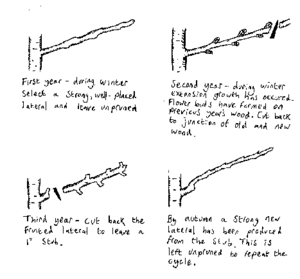Felling is the way toward chopping down trees, a component of the undertaking of logging. The individual cutting the trees is a feller. A feller buncher is a machine equipped for felling a solitary enormous tree or gathering and felling a few little ones at the same time. NPTC-qualified arborists situated in Surrey, who manage all aspects of tree care, including Tree Cutting Service Sutton , tree felling, tree stump evacuation, and support managing, close by other arranging and fencing administrations.
Strategies of Tree felling
Hand felling

Close by felling; an axe saw; or managing apparatus is used to fell a tree, followed up by limbing and bucking in customary applications. In the advanced business logging industry, felling is normally trailed by limbing and sliding.
Limbing or delimbing is the way toward eliminating branches from a standing or fallen tree trunk. In logging, limbing follows feeling. Limbing assumes a part in fire avoidance by eliminating branches from live trees that can in any case fill in as a feature of a fuel stepping stool permitting fire to move from the beginning of the tree covering.
Bucking is the way toward cutting a felled and delimbed tree into logs. Huge worth can be lost by imperfect Bucking since logs bound for compressed wood, timber, and mash each has their worth and particulars for length, the distance across, and deserts. Chopping starting from the top is overbooking and from the base, up is under Bucking. A felled and the delimbed tree is cut into logs of standard sizes, and collaboration called Bucking. A lumberjack who has some expertise in this work is a buck sawyer.
Bucking might be done in an assortment of ways relying upon the logging activity. Trees that have been recently felled and moved to arrival with a log skidder are fanned out for handling. While a considerable lot of the appendages have severed during transport, the excess appendages and stubs should be managed. The bucker will secure the finish of an auto rewinding measuring tape that is connected to his belt and stroll down the log managing as he goes. The tape is moored delicately with a twisted horseshoe nail in the bark so it tends to be yanked free when the estimation is finished. At the point when an appropriate spot to buck the tree is found the cut is made. The critical worth might be lost by problematic Bucking. Neighbourhood economic situations will decide the specific length of cut. It isn’t unexpected for log purchasers to give buy orders for the length, width, grade, and species that they will acknowledge. On the West Coast, normal cuts on an enormous Pine or Fir tree are three 32’s and a 10. There are regularly various costs for various things. The justification is the buck sawyer is regularly paid per segment of log he cuts.
Feller buncher
A feller-buncher is a mechanized vehicle with a connection that quickly cuts and accumulates a few trees during the time spent felling them.
Kinds of cut
- The undercut or indent cut is the directing or pointing opening for the tree and is a V-formed score put on the tree toward the expected fall.
- The back cut or felling cut is made on the contrary side of the tree of the undercut and is sliced through the foundation of the tree cutting off the “pivot” holding the tree up.



